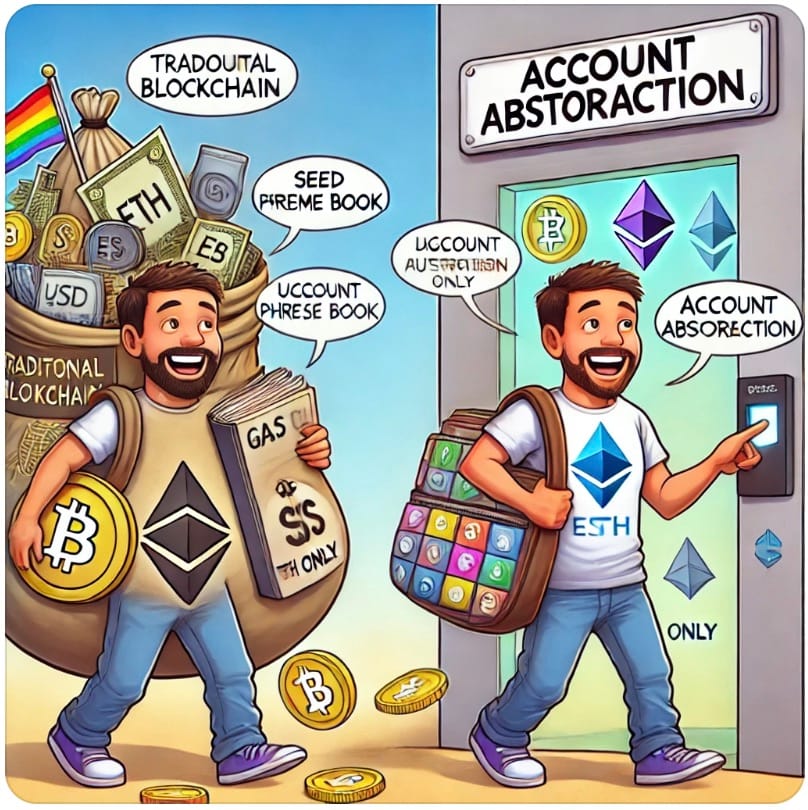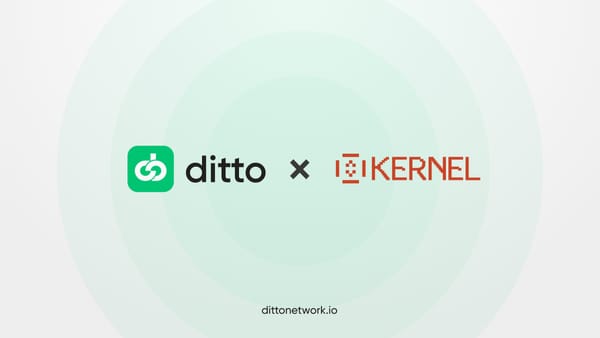Abstraction in Blockchain: Making the Complex Simple
Abstraction, may it be account, chain or collateral; we need it.

Abstraction, may it be account, chain or collateral; we need it.
Blockchain was born out of the need to eliminate middlemen, decentralize power, and offer benefits like microtransactions and data privacy. Yet today, using blockchain is anything but simple. What was intended to make life easier now feels like piloting a plane when most people just want to drive a car—or better yet, ride a bicycle.
The truth is, blockchain’s complexity has limited its accessibility. While it’s meant to take us from Point A to Point B efficiently, it’s currently designed for users to tinker with the vehicle itself. But what if we asked a different question: Do users really need to know how the car works? Isn’t it enough if they reach their destination? This is where abstraction comes in.
Abstraction: The Key to User-Centric Blockchain
Abstraction isn’t about removing features; it’s about removing the need for users to understand the intricate details of blockchain operations. When you send an email, you don’t worry about your friend’s email provider. When you transfer money through a bank, you don’t need to know their bank’s backend system. Yet, in crypto, you still need to know which wallet, chain, and tokens your friend uses to send them assets. This complexity is a major barrier to blockchain adoption.
Imagine your friend Hasan decides to explore crypto. He opens a wallet like MetaMask, carefully writes down his 12-word seed phrase (on paper, in 2025!), and transfers USDC from his CEX account. But wait—he needs ETH to pay gas fees. After navigating high transaction fees and complicated transfers, Hasan finally buys a token. But when he wants to send some to his son, he’s hit with the same gas fee issue again. He just bought EIGEN token with all his money and now his son needs some USDC. He can’t send it.
Blockchain is meant to make life easier, but the current setup makes users jump through hoops just to get started.
The Layers of Abstraction: Simplifying Blockchain
Account Abstraction (AA)
In traditional Externally Owned Accounts (EOAs), users need ETH to pay for gas fees, creating a cumbersome experience. Account abstraction (e.g., ERC-4337) changes the game by allowing users to:
-> Pay gas fees in any token (or simply delegate someone else to pay).
-> Automate transactions through smart wallets.
-> Let developers handle wallets and gas fees behind the scenes.
For example, a game developer could create wallets for players without their knowledge, pay gas fees for in-game transactions, and let users focus solely on playing. This seamless experience is what blockchain owes its users.
Chain Abstraction (ChA)
Blockchain’s fragmented ecosystem—with countless wallets, chains, and bridges—hinders adoption. Chain abstraction aims to provide a chainless experience, where users don’t need to choose the chain or bridge for their assets.
Take Visa as a comparison: In 2023, it handled 72 million daily transactions. In contrast, blockchain’s fragmented user base only managed a fraction of that. According to DappRadar at 2023 year-end, only about 4.2 million unique active wallets were using decentralized applications (dApps) each day and daily unique active wallets (dUAW) hit an all-time high of 24.6 million in November 2024.
The barriers to entry—like choosing a chain or bridge—prevent blockchain from scaling to its full potential. Chain abstraction solves this by ensuring users can interact with dApps with their assets without worrying about the underlying infrastructure.

Collateral Abstraction
Collateral abstraction enables protocols to use a wide range of assets—like stablecoins, liquid staking tokens (LSTs), or LP tokens—for collateral. By decoupling the dependency on specific assets, collateral abstraction enhances:
-> Capital Efficiency: Unlocking idle assets for broader use.
-> Resilience: Reducing systemic risk by diversifying collateral pools.
-> Scalability: Supporting cross-chain collateralization.
This abstraction empowers developers to build decentralized financial systems that are both robust and user-friendly.
Ditto: Bringing Abstraction to Life
Imagine a user having a smart wallet that works seamlessly across all EVM networks, allowing them to execute automations on any chain without worrying about gas fees on individual networks. A unified gas tank ensures the wallet operates efficiently, abstracting away the complexities of interacting with different blockchains. For developers, this means building applications with chain-abstracted automations, enabling them to create sophisticated dApps without forcing users to grapple with underlying technical details.

Imagine a DeFi trading platform that enables users to trade assets across multiple EVM-compatible blockchains, such as Ethereum, Avalanche, and Polygon. Here’s how Ditto's abstraction powers a seamless experience for both users and developers:
User Experience:
-> Scenario: A user wants to execute a trading strategy involving the purchase of a token on Polygon, swapping it for another token on Ethereum, and staking the final asset on Avalanche for yield farming.
-> Without Abstraction: The user would need to manually:
- > Switch between wallets for each chain.
- > Pay gas fees in MATIC, ETH, and AVAX for each transaction.
- > Monitor multiple blockchains and manually execute trades across different platforms, all while ensuring they have sufficient native tokens for gas fees.
-> With Ditto's Abstraction:
-> The user simply inputs their intent, such as “Stake Token X on Avalanche for yield.”
-> Ditto's smart wallet:
- > Executes all necessary steps (purchasing, swapping, and staking) across chains.
- > Utilizes a unified gas tank, so the user doesn’t need to worry about maintaining gas tokens on each network.
- > Provides real-time automation, ensuring the trades happen optimally based on predefined conditions, such as the best price or liquidity.
Developer Perspective:
-> Developers building the trading platform don’t need to worry about integrating separate solutions for cross-chain swaps, gas fee management, or automation logic.
-> Using Ditto's chain-abstracted automations with Ditto SDK, the developers can:
- > Focus on creating advanced trading tools and strategies.
- > Enable cross-chain functionality without having to develop bridges or token-specific mechanisms.
- > Utilize Ditto’s unified infrastructure to ensure all transactions are securely executed with economic guarantees provided by shared security models like EigenLayer and Symbiotic.
The Result:
-> For the user: A smooth, one-click experience that abstracts away the complexity of interacting with multiple chains and wallets.
-> For the developer: Simplified development workflows with pre-built tools and infrastructure that save time and resources, while enhancing the platform’s functionality and user satisfaction.
How Ditto Achieves This:
-> Chain Abstraction: Users don’t need to know which chain they’re interacting with. Ditto optimizes protocols and solvers for any intent, creating a chainless, hassle-free experience while developers focus on building powerful applications.
-> Account Abstraction: Transactions no longer require users to hold native currency of each chain for gas fees. Features like paymasters enable dApps to handle fees flexibly, improving user onboarding and overall experience.
-> DeFi Abstraction: Complex DeFi strategies, such as multi-pool rebalancing or liquidity management, are automated for seamless user experiences. Ditto eliminates the need for manual interventions, allowing developers to build applications that adapt to users' intents effortlessly.
By combining these layers of abstraction, Ditto is revolutionizing blockchain interaction. Leveraging shared security models like Symbiotic and EigenLayer, Ditto ensures economic guarantees of execution, holding operators accountable through slashing mechanisms. This makes blockchain operations not only secure but also intuitive, paving the way for greater adoption and innovation.
The Future of Blockchain: Invisible Complexity
Blockchain developers need to ask themselves: Is the goal to make users understand blockchain, or to help them achieve their goals effortlessly? Abstraction isn’t about simplifying technology; it’s about simplifying experiences. When users no longer need to worry about wallets, gas fees, or chains, blockchain will truly become the democratic infrastructure envisioned in 2008.
With account, chain, and collateral abstraction, we’re not just building better technology—we’re building a better future. And with platforms like Ditto, that future is closer than ever.




